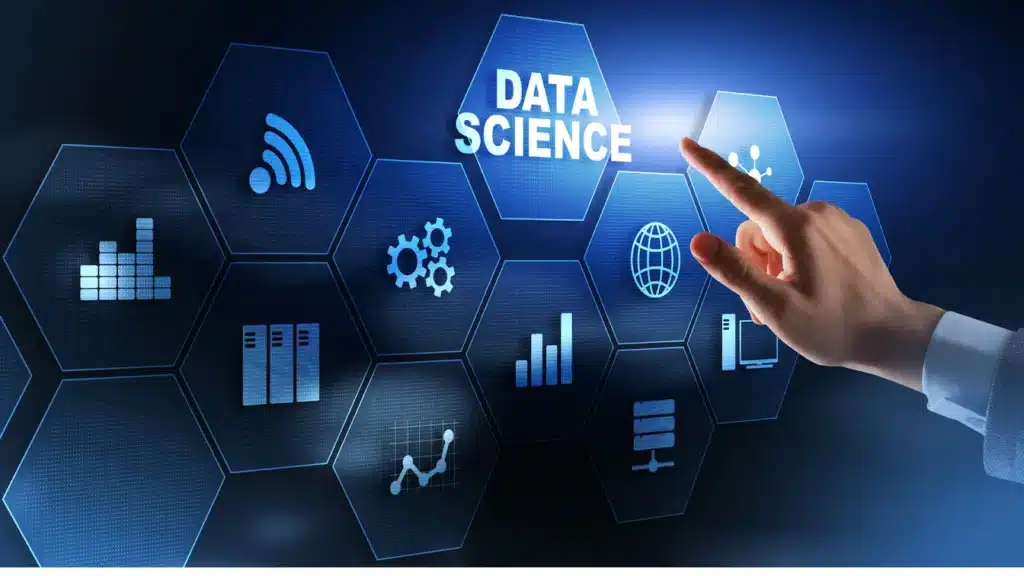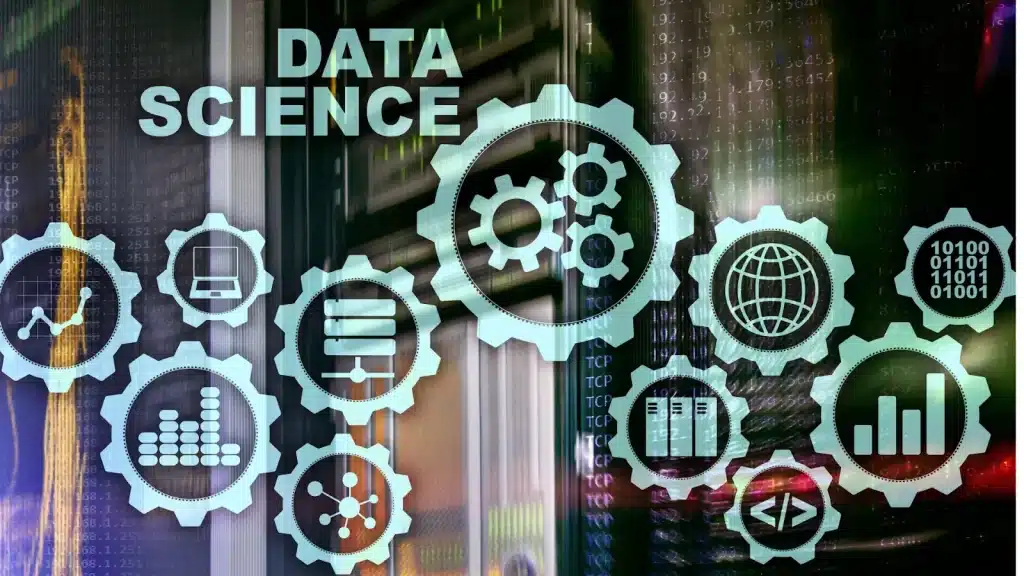In today’s modern age of technology, there is a lot of talk about data science. It is more popular now than ever before. The power of data is seen in how businesses use it to make intelligent choices and how researchers discover new and unique things.
Learning how these tools work can change how you think about data if you’re interested in data or already know a lot about it.
At this time, data science has become vital for organizations to understand large amounts of data. But what makes this process easy to understand and follow? Data Science Tools are tools that are used to analyze and interpret data. These tools help us make sense of large amounts of information and find patterns and trends. They can be software programs or online platforms that allow us to collect.
Role in Optimization: Picture yourself searching through a vast amount of data to find a pattern but doing it by hand. Seems complicated, doesn’t it? These tools are like powerful magnifying glasses. They make complex tasks easier, prevent mistakes, and analyze things faster.
Before we can study data, we have to collect it.
Web Scrapers: Tools like Scrapy and Beautiful Soup help people gather organized information from web pages. This allows them to collect a lot of data from the internet.
APIs are tools that let different websites and apps share information. Social media and financial websites use them to get data quickly and in a structured way.
Data marketplaces can be thought of as “data supermarkets.” Services like AWS Data
Exchange and Quandl offer already-prepared datasets that can be used for different subjects.
Data Cleaning Tools What you put in is what you get out. The quality of the information you put in affects how well you can analyze it.
Why do we need preprocessing? Raw data can sometimes be messy. The data might need some information, have repeated values, or be consistent. Cleaning ensures that the information in analytical models is correct and makes sense.
Pandas is a Python library that is great for working with data. You can easily filter, change, and group data using the DataFrame structure.
OpenRefine is like a place where you can take care of your data. It cleans, changes, and improves your data, ensuring it’s in the best condition for analysis.
Data Visualization Tools A picture is precious because it can simply show a lot of information.
Why Visualize?: Visualization changes complicated data sets into easy-to-understand information. By using charts, graphs, and plots, we can see patterns and unusual things in data.
Matplotlib and Seaborn are libraries for Python that provide many different tools for making plots. They have a variety of graphs, from simple lines to detailed heat maps.
Tableau is a unique computer program that helps you make your data stories more exciting and easily understood. It can turn your data into colorful and interactive dashboards.
Data Analysis & Statistical Tools When we study data, it turns into information.
Data analysis tools help explore, understand, and find important information from data.
R is a popular tool for statisticians. It has many statistical tests and options for modeling data.
Python is an imperative programming language for data science. It has many libraries that make it even more helpful.
SPSS is a software program that helps you analyze data and statistics. It’s great for people who don’t like programming.
Machine Learning Tools We go beyond just analyzing things and start making predictions and recognizing patterns.
Understanding Patterns: Machine Learning tools help systems learn from data, identify patterns, and make decisions, sometimes even better than humans.
Scikit-learn is a Python library that helps analyze data to make predictions.
TensorFlow and Keras are both used for deep learning. TensorFlow, made by Google, is a helpful tool for making neural network models. Keras is another tool that works with TensorFlow and makes it easier to create models.
Big Data Processing Tools The digital age has brought in a lot of data. Managing such a large amount is a challenging task.
Dealing with Big Data: When data gets big, regular tools need help to handle it. The challenge is not only about how much there is but also about how fast things are moving, how different they are, and how true they are.
Apache Hadoop is like a strong, hardworking animal that helps handle enormous amounts of data. It lets you split up big data sets and work on them with multiple computers. You can do this using easy programming methods. It can safely store a lot of data using its HDFS (Hadoop Distributed File System).
Apache Spark is like the lightning to Hadoop’s thunder. Spark is a technology that can process data quickly because it uses in-memory processing. This means it can process data up to 100 times faster than Hadoop. It can work with many programming languages and has SQL, streaming, and machine-learning tools.
Data Storage and Databases All analyzed data must have a place to be stored.
SQL Databases: Traditional databases such as MySQL, PostgreSQL, and Oracle are good at storing organized data. They use a plan to show how data is connected, which helps keep it accurate and organized.
NoSQL Databases: MongoDB and Cassandra are designed to handle unstructured data flexibly. They expand by spreading the data across multiple servers.
Cloud storage solutions include Amazon S3, Google Cloud, and Azure Blob Storage. They provide big, safe, and flexible storage options. This means you don’t need to have your storage system.
Tools for Deployment and Production After the rigorous process of training, models are eager to be deployed and make an impact in the real world.
Docker is an essential analytics tool used in data science. It encapsulates your data science project into containers, ensuring uniformity across varied environments. This consistency is crucial when dealing with structured data sourced from diverse data sources, such as business data or data mining results.
Kubernetes serves as a guardian for these containers, streamlining data pipelines and ensuring efficient management, scaling, and maintenance of containerized applications. Think of it as the vigilant custodian of your data projects.
For data scientists who want to focus on refining their models and diving deep into vast volumes of data, Cloud Platforms like AWS SageMaker, Google AI Platform, and Azure ML are indispensable. These platforms not only accommodate data preparation and the intricacies that come with handling data like high-resolution images but also monitor performance and scalability. This ensures that as a data scientist, you can hone your model without getting bogged down by deployment intricacies.
Embarking on a data science course is a great way for those aspiring to become data scientists. With the fusion of data science and machine learning becoming more prevalent, having knowledge of these tools and platforms becomes a foundational step in the journey.
Integrated Development Environments (IDEs) All artisans require a place to work called a workshop.
Jupyter Notebook is a popular tool among people who work with data. You can use it to do interactive computing. This means combining code, visuals, and text in one document.
RStudio is made specifically for people who use R. It helps them work more efficiently by giving them tools to write code, find and fix mistakes, and create visual representations of their data.
Visual Studio Code is a program that can be used for many different programming languages.
Python and R have extensions that make it a good choice for data science tasks.
Data Science Version Control Changes are bound to happen, and keeping track of them is essential.
Why Use Version Control?: Errors occur. Git is software that helps you keep track of changes you make to your work. It’s like a time machine because it allows you to go back in time and see what your career looked like before. This can be helpful if you want to look at previous versions or undo changes to your work.
Git is software that helps you keep track of your coding work. It is called a distributed version control system.
GitHub is a website where people can share and collaborate on computer code. It’s a place to connect with others interested in coding and work together on projects. It’s where people work together, review, and store code, making team projects easier.
Challenges in Using Data Science Tools Every tool has its quirks.
Learning Curve: Every tool has its way of writing commands and things it is good at and can’t do. Becoming a master at something takes a lot of time and patience.



